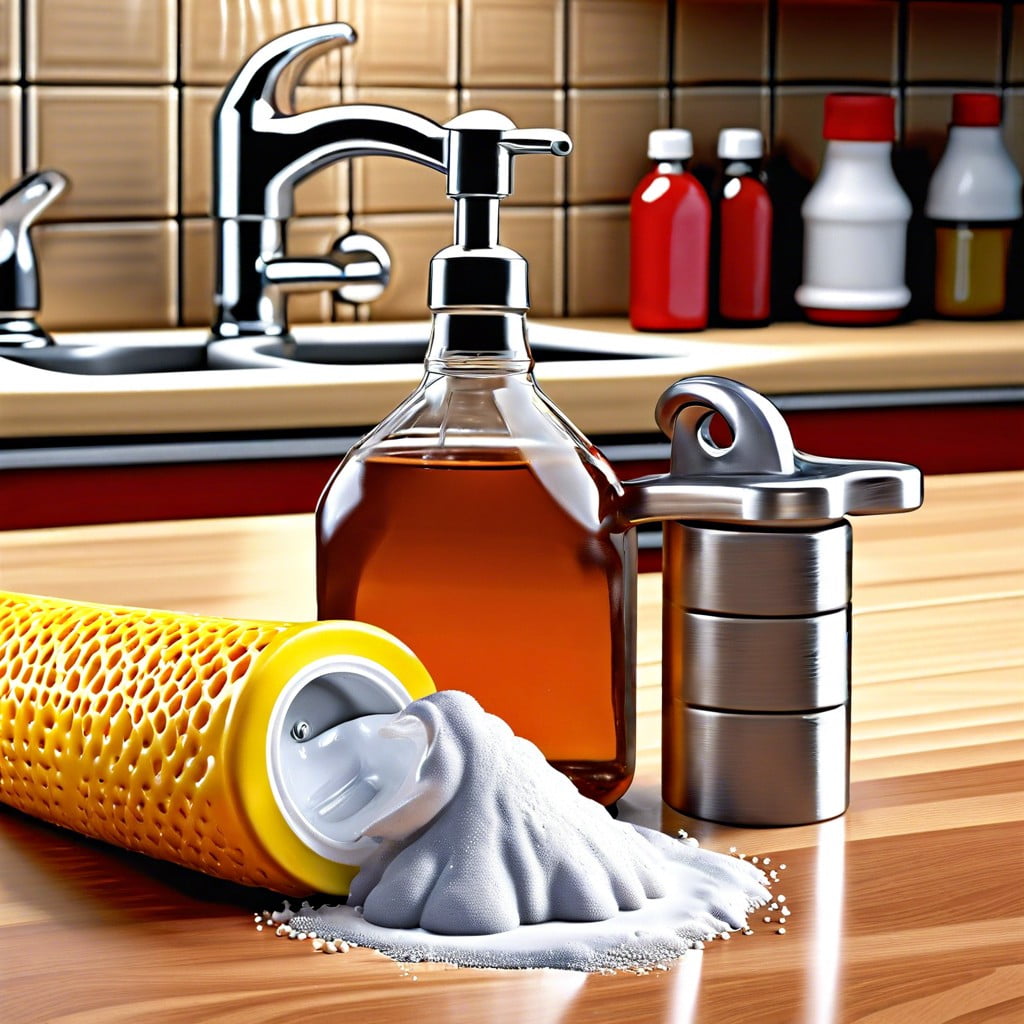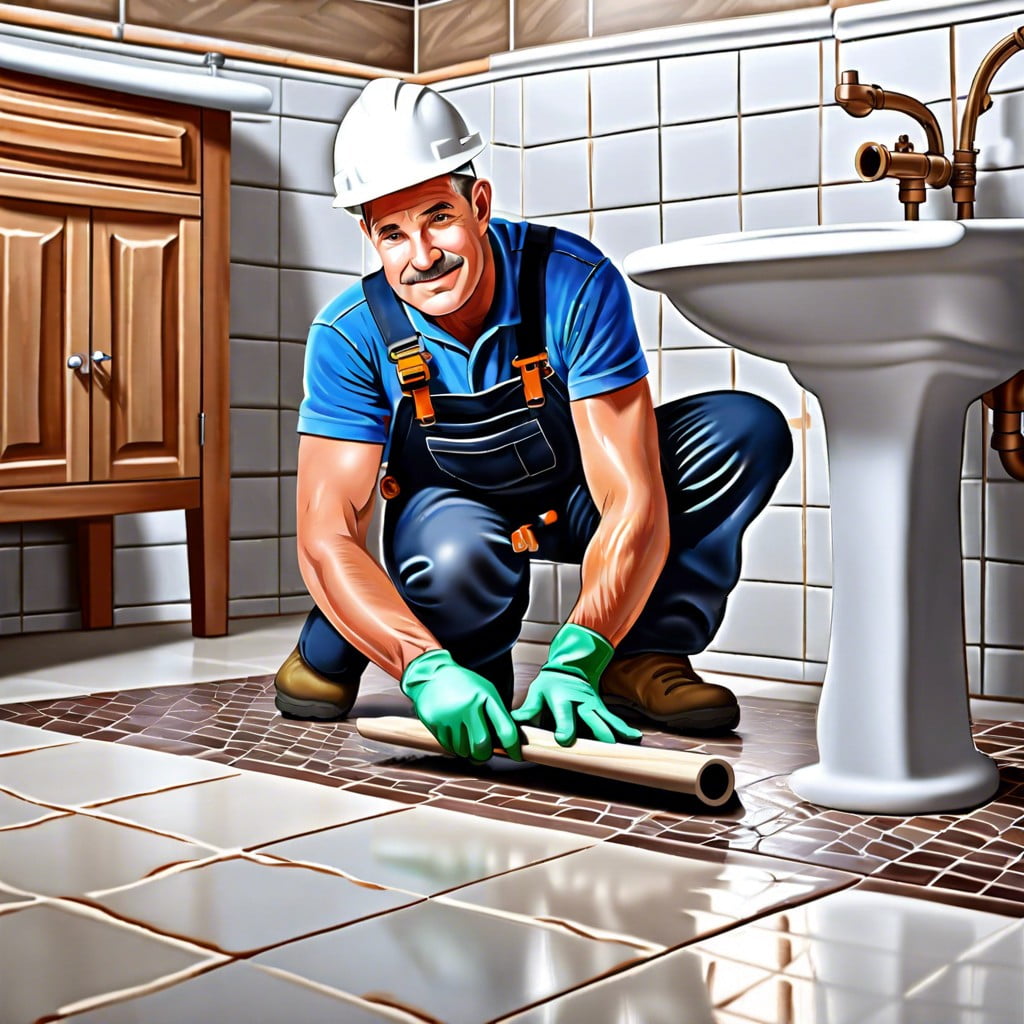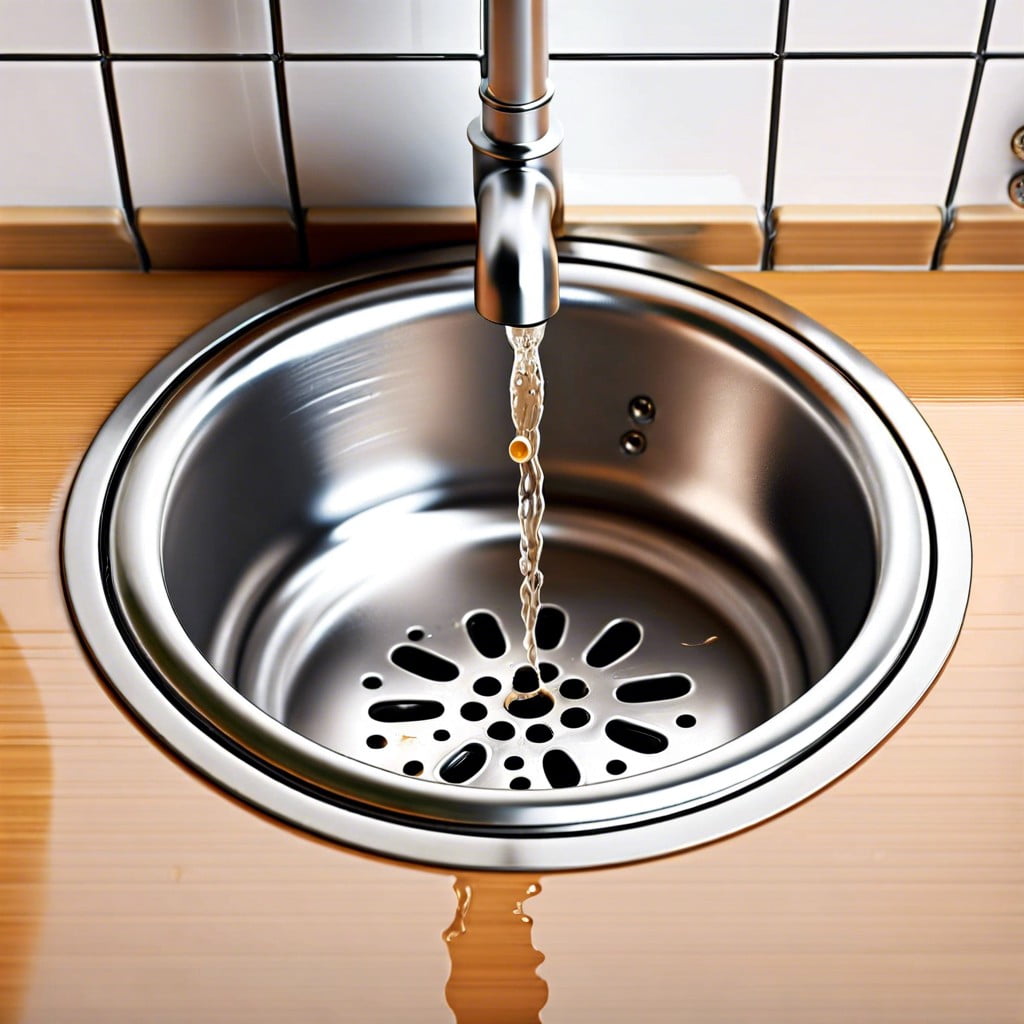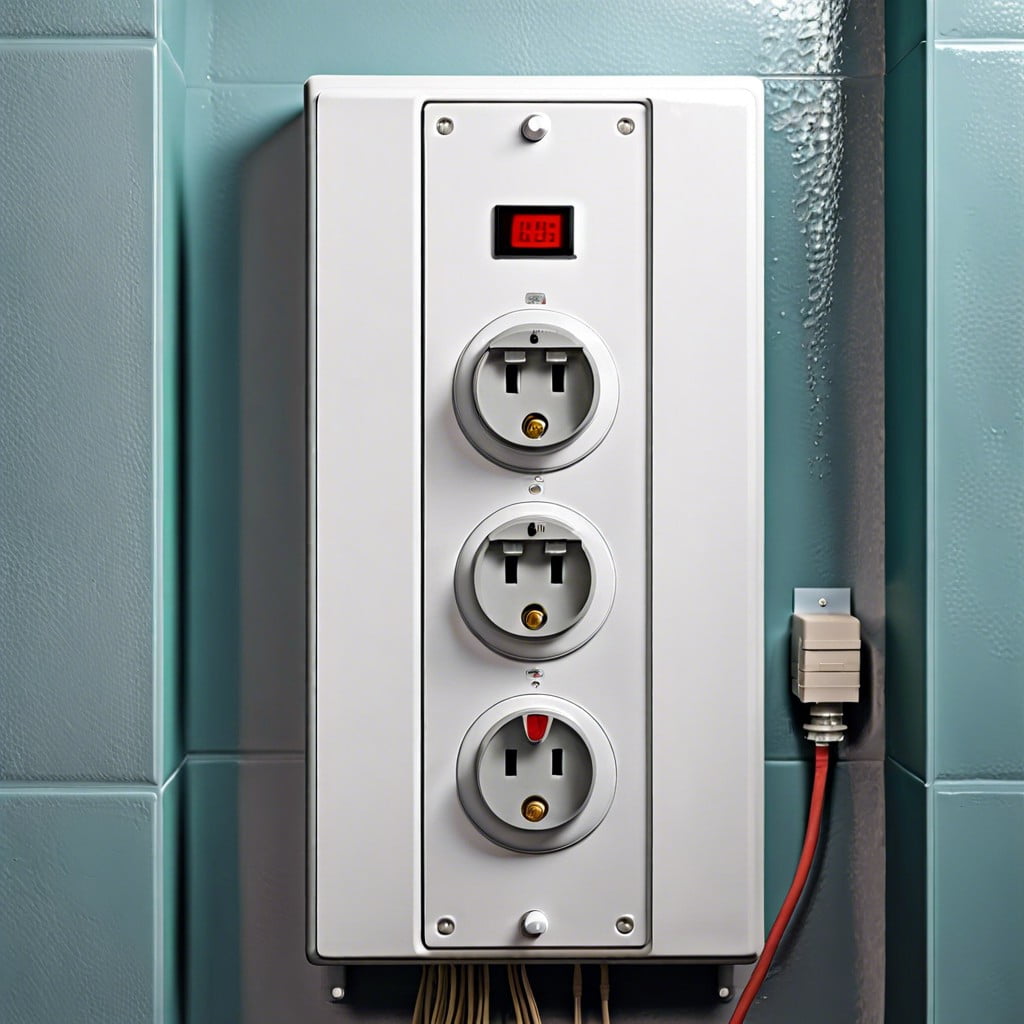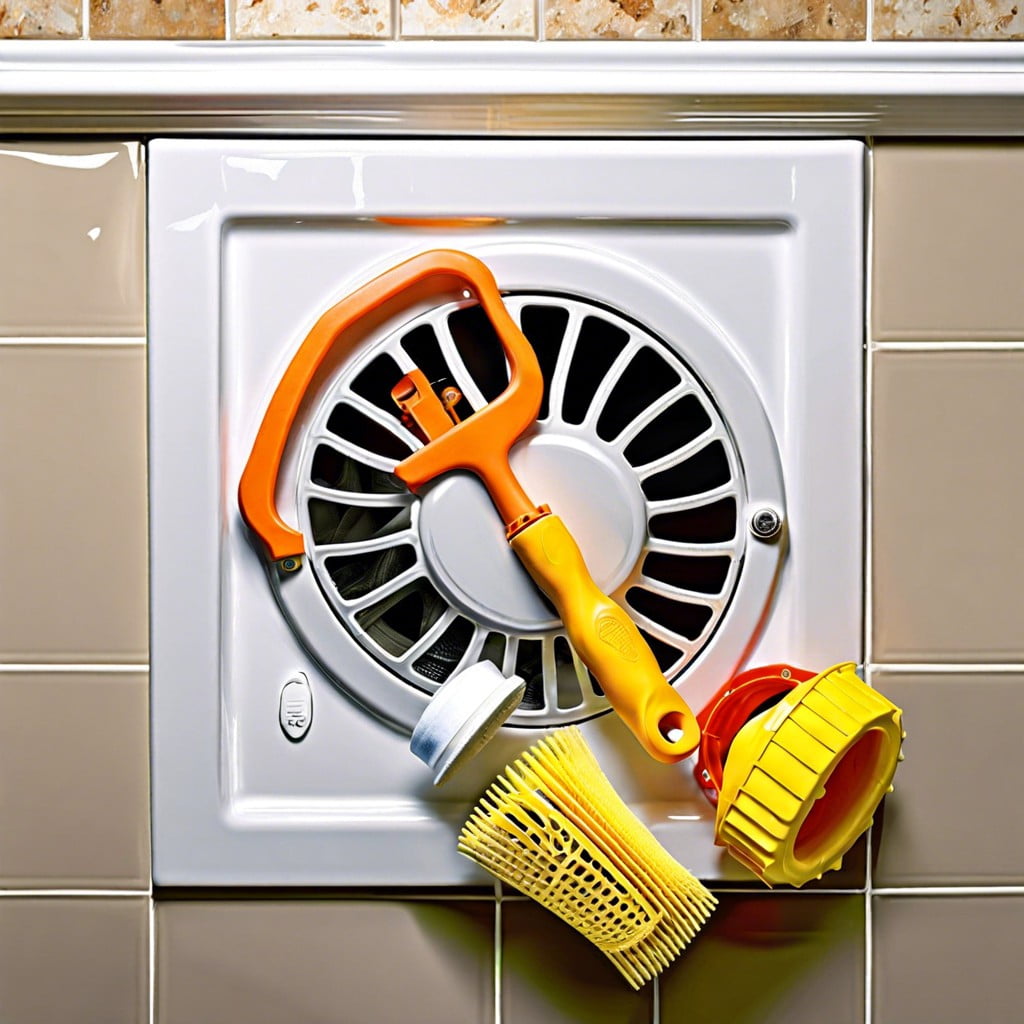Last updated on
In this guide, you will find easy-to-follow steps to tile your bathroom floor with precision and finesse, transforming your space into a glamorous sanctuary.
Key takeaways:
- Porcelain and ceramic tiles are best for damp environments.
- Understand the difference between sanded and unsanded grout.
- Diagonal patterns can make the bathroom appear more spacious.
- Use recycled materials for an eco-friendly and unique finish.
- Prepare the subfloor with self-leveling compound and clean it thoroughly.
Basics of Bathroom Floor Tiling
Diving straight into it, the venture of tiling a bathroom floor can elevate the room’s aesthetics and functionality to new levels. This task demands precision and a bit of patience but delivers satisfying and long-lasting results.
To begin, it’s essential to comprehend the materials and methods best suited for damp environments. Porcelain and ceramic tiles dominate the scene due to their resilience against moisture and wear. However, natural stone provides an upscale look, though it requires sealing to fend off water damage.
Furthermore, understanding the distinction between sanded and unsanded grout is crucial. Sanded grout is typically used for larger tile joints, while the smoother, unsanded variety is ideal for smaller, delicate joints.
Another crucial idea is the layout pattern which isn’t merely a style choice; it influences waste, cutting, and the room’s perceived dimensions. Diagonal patterns, for instance, can make the bathroom appear more spacious.
Lastly, in an age where eco-friendliness is more than a buzzword, the use of recycled materials in tiles is not only good for the planet but often provides a unique finish to your floor. These points set the foundation for a successful tiling project that can withstand the test of time and moisture.
What You’ll Need
Gear up with the essentials before you dive into the sea of tiles and grout. Safety is paramount, so arm yourself with goggles and gloves – the unsung heroes of DIY ventures.
Grab a trusty notched trowel; it’s the magic wand for spreading adhesive, and don’t forget the tile cutter for those inevitable custom fits.
Keep spacers handy; they’re the guardians of tile alignment, ensuring an even, professional-looking spacing between your tiles.
Lastly, a solid level is your ally against sloping disasters; it’s the beacon of balance for your tile layout.
Remember, preparation is half the battle – gather these tools, and you’re on the right track.
Prepare the Subfloor
Ensuring a level and clean foundation is pivotal for a successful tile job. Address any dips or high spots; a self-leveling compound can work wonders here.
Check for moisture issues; if any arise, a waterproof underlayment might be necessary. For those planning to work on a wooden subfloor, secure any loose boards and consider adding a backer board to prevent future movement.
Cleanliness is non-negotiable—sweep and vacuum up all debris for the best adhesion. Remember that preparation is as critical as the tiling itself; a meticulous approach here saves headaches later.
Install the Tiles With Thinset
Begin by mapping your layout strategy to avoid awkward cuts along the walls. Spread the thinset, working in small sections to maintain a workable area, and comb it with a notched trowel to create a uniform adhesive bed. Press each tile firmly into place, maintaining consistent gaps for grout with spacers. Check for flush and level installation using a long spirit level. If a tile is too low or high, gently tap it with a rubber mallet. Wipe any excess thinset from the tile faces and between joints before it dries. Remember, the key to longevity is a solid base; rush the setting process, and you invite future cracks or loose tiles.
Apply Tile Grout
Sealing the deal with grout is not just a necessary step in tiling; it’s also an art form that can make or break the look of your bathroom floor. Opt for a grout color that complements your tiles to enhance the design.
When mixing grout, consistency is key; aim for the texture of creamy peanut butter. This ensures it spreads well and penetrates the spaces between tiles.
Apply the grout using a rubber float, working it into the joints at a diagonal angle. This approach not only forces the grout deep into the gaps but also minimizes the amount left on the surface of the tiles.
Be vigilant about the grout’s drying time—work in sections and clean as you go. A damp sponge is your ally here, used to wipe away excess and shape the joints before the grout sets too firmly.
Remember, patience during this step pays off with a professional-looking finish that stands the test of time.
FAQ
What should you put down before tiling a bathroom floor?
Before tiling a bathroom floor, lay down a cement-based backer board to ensure a solid, crack-resistant surface.
Where do you start tile in a bathroom floor?
In my view, the optimal starting point for tiling a bathroom floor is the room’s center, working outward to ensure an evenly centered tile pattern.
Can I tile a bathroom floor myself?
Indeed, with the right tools and careful attention to requirements, it is possible to tile a bathroom floor yourself, without the need for a professional.
Is tiling a bathroom floor easy?
While it’s relatively straightforward to place tiles on a bathroom floor, mastering the art of laying them perfectly to achieve a professional finish can indeed be quite challenging, with a fair share of time and effort involved.
How important is the quality of grout when tiling a bathroom floor?
The quality of grout is paramount when tiling a bathroom floor as it significantly determines the longevity and waterproofness of the tiling.
In what ways can room layout influence the layout of bathroom floor tiles?
The room layout can significantly dictate the layout of bathroom floor tiles by determining tile orientation, size and pattern choice to maximize space, improve functionality and enhance aesthetic appeal.
Can underfloor heating elements affect the installation of bathroom floor tiles?
Underfloor heating elements can indeed affect the installation of bathroom floor tiles, mainly through necessitating a modified installation process and possibly influencing tile material choice.
Recap
